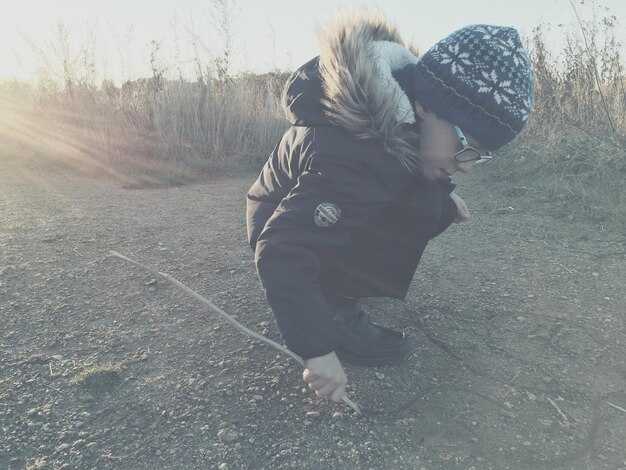There’s a repeating dynamic that quietly destroys many women’s lives, and it often goes unnoticed. You’re intelligent. You work hard. You’ve put effort into personal growth. Still, you find yourself trapped in the same heartbreaks, the same exhaustion, the same stuck points. This isn’t just bad luck. It’s tied to trauma. It runs you on autopilot. The good news is: once you recognize you’re operating this way, you can choose differently. For countless women who experienced abuse or neglect in childhood, life often looks like this: you pour yourself out, you trust too quickly, you try to be composed, you tolerate hurts, and then you turn the blame inward. When a relationship falls apart, a job drains you, or you have another meltdown, that inner voice asks, “What’s wrong with me?” But what if it’s not solely about you? What if the loop you keep falling into is actually a survival pattern shaped by trauma—especially common among women who were neglected or harmed as children. This doesn’t have to define your life forever, but it does create vulnerability. Now is the moment to name it and begin to undo it. It’s interesting—and sometimes brutal—how this shows up when your work feeds that survival response. For example, in making YouTube videos, feedback is immediate: people either praise you or reject you, and each upload releases dopamine. That can tempt you into trying to please everyone with endless content. It’s not a realistic or sustainable way to live, yet it can trap creators on a relentless treadmill. YouTubers often struggle with depression and life instability because their mood swings ride on views, subscribers, and metrics. Here’s the reality: trauma etches itself into your nervous system. “Fingerprint” isn’t quite the right metaphor—it’s an injury. Trauma can make you prone to nervous system dysregulation that touches every part of you—your personality, your body, and your life. Everyone experiences dysregulation sometimes, but people with trauma experience it more frequently, more intensely, and it’s harder to recover from. If you’ve been dysregulated for long stretches—even much of your day for years—it can start to feel like the baseline of normal life. When you’re dysregulated, everything warps: your thoughts, bodily systems, decisions, feelings, and your sense of who and what is safe. The result is a cluster of self-sabotaging behaviors that can undo you. You fall in love too quickly. You extend trust too far. You stay when you should walk away. Don’t beat yourself up—these are trauma responses, logical adaptations to abnormal childhood conditions. Once you can spot them in yourself, change becomes possible. Start now. Below are ten hidden patterns quietly eating away at women’s lives—like termites working under the floorboards of the soul. One, falling for unavailable people. That hollow longing isn’t real love; it’s the old wound of abandonment getting triggered again and again. If you’ve been drawn to the emotionally unavailable once, twice, or three times, that repetition strongly suggests trauma is shaping your attachments. Want to check whether this applies to you? There’s a free download that outlines signs that childhood abuse or neglect influences who you fall for, how you attach, and what happens when relationships end. I’ll place a link to that quiz in the top row of the description so you can access it today. Number two, mistaking chaos for love. You stay in high-drama relationships because the intensity feels like connection, but that rush is cortisol, not closeness. That adrenaline becomes appealing—or even addictive—as an escape from pain. Three, trauma-driven decisions. Big life changes made from a place of anxiety or emotional overwhelm can feel like clarity when they’re actually panic dressed up as certainty. Number four, spiritual bypassing. You put up with harm and call it acceptance. You dodge conflict and label it peace. Plenty of people will gaslight you, claiming your boundaries are “unevolved,” but you get to set your standards and choose who’s allowed in your life. Number five, covert avoidance. Outwardly you function, and you have people around you, but you keep them at arm’s length. Secretly you withdraw—numbing yourself, canceling joy, hiding your truth, staying endlessly busy so no one gets close. Number six, overfunctioning in chaos and collapsing in calm. You thrive when everything’s a crisis but fall apart when life is peaceful. Often this came from childhood responsibility: you learned to control or manage stressful situations because you had to, but that strategy wasn’t meant to be your default way of living. Seven is confusing dysregulation with intuition. Intense feelings feel authoritative, but intensity is not the same as insight—often it’s just a nervous system in overdrive. Number eight, performing the “cool girl.” You act like casual encounters don’t affect you, or you go along with casual arrangements even after you hoped it was serious. You erase parts of yourself to avoid rejection, but the “cool girl” persona is often the one who ends up rejected. People can only love you for who you truly are when you show your real self. Nine, letting others rewrite your reality. When people repeatedly tell you, “You’re dramatic” or “You’re overthinking it,” you can start to accept that message. That’s manipulation, not insight. Number ten, constantly questioning whether you’re the problem. You may leave something toxic but still wonder if you imagined it. Trauma blurs the line between what’s your responsibility and what isn’t. Don’t let that doubt pull you back into the high-drama situation you finally escaped. Even if you played some part, you needed distance from the chaos to heal. For many who grew up with trauma, the notion of “normal” gets scrambled. Safety can feel hostile; the familiar can be harmful; what’s genuinely healthy may feel uncomfortable or wrong at first. A common pattern is turning blame inward—not because guilt is warranted, but because uncertainty makes you doubt yourself. If you spent years walking on eggshells or being told your emotions were invalid, your ability to trust your instincts gets jumbled. Sometimes it feels safer to believe the problem is inside you because that’s something you can try to control or “fix.” But that mindset keeps you trapped. I also see women who become experts at pretending they’re fine: minimizing, rationalizing, smiling through pain because that’s what childhood taught them. These aren’t moral failings; they’re survival strategies that can evolve into self-defeating habits. Those strategies made sense during the trauma, but they no longer serve you. If you want a list of common self-defeating behaviors linked to childhood neglect or abuse, there’s a free download available—I’ll put it in the second row of the description beneath this video. You’ll likely want to take a look. Real change begins when you see the pattern, not just the pain. Start by naming the truth about the people in your life, your choices, where you’re stuck, and what those patterns cost you. Then act. Maybe that means ending what drains you. Maybe it means reaching out instead of disappearing. Maybe it’s finally tackling something you’ve avoided for years. You don’t need to have every detail figured out; you need clear awareness and one concrete step. You’ll often find that taking one step makes the next one appear. That’s how healing works: one honest action after another. If this resonated, there’s another video you’ll probably love right here. See you soon. It doesn’t have to feel this way—and if it does now, that’s a signal something needs to change. [Music]
Practical steps and supportive tools to start changing these survival patterns:
- Three-minute regulation tools you can use anywhere
- 5‑4‑3‑2‑1 grounding: name 5 things you see, 4 you can touch, 3 you can hear, 2 you can smell, 1 you can taste (or one steady breath) to orient your nervous system.
- Box breathing: inhale 4 seconds — hold 4 — exhale 4 — hold 4. Repeat 4 times to reduce panic and bring clarity.
- Paced movement: a brief paced walk, shaking your hands, or gentle stretching can discharge stress and move energy out of your body.
- Small boundary practices to try today
- Use short, clear scripts: “I’m not comfortable with that,” “I can’t take this on right now,” or “I need 24 hours to think about that.”
- Start with a low‑risk boundary (e.g., decline an invitation or set a time limit on a phone call) to build confidence.
- Practice saying no in front of a mirror or with a trusted friend so it becomes easier in real interactions.
- Daily habits that rebuild safety and regulation
- Create a simple routine: regular sleep, meals, short movement, and a five‑minute check‑in with yourself each morning or evening.
- Limit stimulation that fuels dysregulation: reduce doomscrolling, take breaks from social media, and protect your evenings from triggering content.
- Prioritize connection: schedule small, predictable social contact with people who make you feel seen and safe.
- Journal prompts to increase clarity
- “What did I need today that I didn’t get?”
- “What made me feel unsafe, and what would have felt safer?”
- “What is one small step I can take this week to protect my energy?”
- When and how to seek professional support
- Look for a trauma‑informed therapist and ask about specific approaches: EMDR, Somatic Experiencing, Sensorimotor Psychotherapy, IFS, DBT, or attachment‑focused therapy.
- Ask potential therapists about their experience with attachment wounds, complex trauma, and nervous‑system regulation techniques before committing.
- If affordability or access is a barrier, search for sliding‑scale therapists, community mental‑health clinics, university training clinics, or online platforms that offer more options.
- Signs you should seek urgent help
- If you have thoughts of harming yourself or feel unable to keep yourself safe, contact local emergency services or a crisis line right away.
- If you’re in an unsafe relationship, a safety plan and confidential support from local domestic violence services can help—reach out to local resources for guidance.
- Recommended reading and resources
- The Body Keeps the Score — Bessel van der Kolk
- Complex PTSD: From Surviving to Thriving — Pete Walker
- Attached: The New Science of Adult Attachment and How It Can Help You Find—and Keep—Love — Amir Levine & Rachel Heller
- Hold Me Tight — Sue Johnson (for attachment and couples work)
One concrete invitation: choose one tiny, doable action you can take today — a brief boundary, a three‑minute regulation practice, or sending a message asking for support — and do it. Healing isn’t a single dramatic fix; it’s repeated, small honest actions that over time retrain your nervous system and reshape your relationships. If you can see the pattern, you can change it. You don’t have to do it all at once. Start with one step, and give yourself credit for it.



 This Hidden Pattern Wrecks Women’s Lives — End It Before It Ends You">
This Hidden Pattern Wrecks Women’s Lives — End It Before It Ends You">

 To Make an Avoidant Apologize, You Must Do THIS (Here’s Why)">
To Make an Avoidant Apologize, You Must Do THIS (Here’s Why)">
 Is it ok to MAKE FUN of your partner?">
Is it ok to MAKE FUN of your partner?">
 Our Words can be so HURTFUL! || Don’t Destroy your Relationship with your WORDS!">
Our Words can be so HURTFUL! || Don’t Destroy your Relationship with your WORDS!">
 Is He the One Who Can’t Do Intimacy? Or Are YOU?">
Is He the One Who Can’t Do Intimacy? Or Are YOU?">
 How to Stop Fighting about the Dishes">
How to Stop Fighting about the Dishes">
 Why Dismissive Avoidants Fall Harder When You Step Back | Jordan Peterson Motivational Speech">
Why Dismissive Avoidants Fall Harder When You Step Back | Jordan Peterson Motivational Speech">
 How to Argue with a Narcissist and WIN!">
How to Argue with a Narcissist and WIN!">
 The Hidden Rules of Female Friendships That Can Break You">
The Hidden Rules of Female Friendships That Can Break You">
 Çekingen Eski Sevgilinizle Ne Kadar Uzun Süre Sessiz Kalırsanız, İşte Bu Olur | Jordan Peterson">
Çekingen Eski Sevgilinizle Ne Kadar Uzun Süre Sessiz Kalırsanız, İşte Bu Olur | Jordan Peterson">
 Unhealed Trauma & Poor Boundaries Make Finding The ONE Feel Impossible">
Unhealed Trauma & Poor Boundaries Make Finding The ONE Feel Impossible">